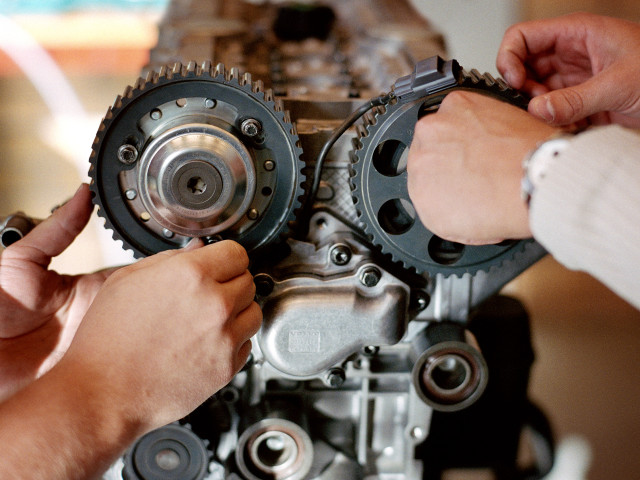Starting from one-dimensional analysis of turbomachinery components, the view is widened to two-dimensional and three-dimensional aspects. Experimental data, numerical calculations and laboratory experiments are combined to give the student a deep understanding over the flow phenomena in turbomachines. Detailed aspects such as cooling technology, aeromechanics, materials and system properties are explained to give a context. Calculation examples are used to deepen the understanding of the phenomena dealt with. Online tests will be available during the course and is a part of the examination.
MJ243U Turbomachinery, Commissioned Course for Industry 3.0 credits

Information per course offering
Course offerings are missing for current or upcoming semesters.
Course syllabus as PDF
Please note: all information from the Course syllabus is available on this page in an accessible format.
Course syllabus MJ243U (Autumn 2015–)Content and learning outcomes
Course contents
Intended learning outcomes
The course general aim is to give an overview and applied tools for the student to handle specific aspects within turbomachinery according to the customer's wish as it is a contract education. Focus can be on turbo applications within the transport sector (aircraft engines, turbo chargers, ship propulsion) and the energy sector (steam and gas turbines for power generation) depending on which modules that are chosen.
After completion of the course, the student will be able to:
⢠Explain 2D and 3D flow related phenomena in turbomachinery components
⢠Basic understanding of non-stationary flow phenomena in turbomachinery
⢠Understand the basic philosophies for blade design
⢠Carry out simple aerodynamic blade design
⢠Explain the interaction between flow fluid and mechanical structure
⢠Understand basic aeromechanical design aspects
⢠Understand the basic combustion chamber principles and their challenges
⢠Understanding basics of heat transfer and cooling techniques related to turbomachines
⢠Discuss the challenges of today and tomorrow related to turbomachines
Literature and preparations
Specific prerequisites
Entry requirements:
Applied thermodynamics, equivalent to MJ1112
Fluid Mechanics, equivalent to SG1220
Literature
Current edition is posted on the course web page no later than four weeks before the start of the course.
Examination and completion
Grading scale
Examination
- TEN1 - Exam, 2.5 credits, grading scale: P, F
- LAB1 - Laboratory Exercise, 0.5 credits, grading scale: P, F
Based on recommendation from KTH’s coordinator for disabilities, the examiner will decide how to adapt an examination for students with documented disability.
The examiner may apply another examination format when re-examining individual students.
If the course is discontinued, students may request to be examined during the following two academic years.
TEN1- Examination, P/F
LAB1- Laboratory experiment, P/F
Examiner
Ethical approach
- All members of a group are responsible for the group's work.
- In any assessment, every student shall honestly disclose any help received and sources used.
- In an oral assessment, every student shall be able to present and answer questions about the entire assignment and solution.